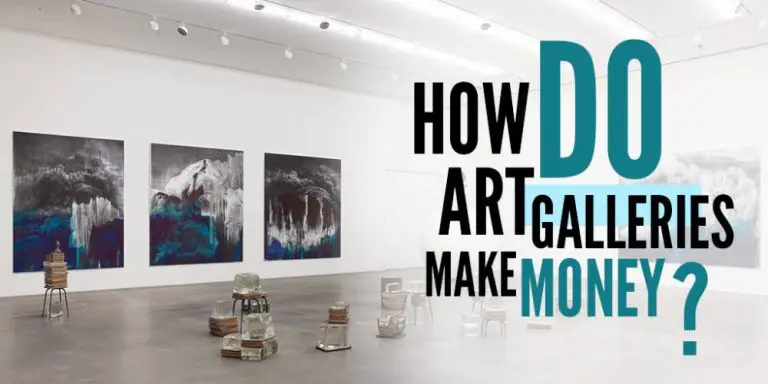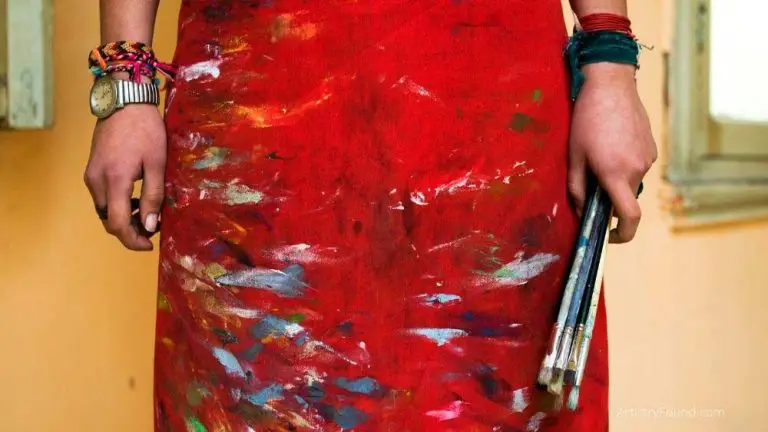The Purpose of Art: What You Need To Know
Art, as we know it, comes in dozens of different forms.
Essentially, art is everywhere – from the pictures you take on your smartphone or the billboard outside your office to Broadway shows and fine art galleries. But what is the purpose of art?
The purpose of art is to allow people, both individually and in group settings, to express emotions, commemorate history, expose injustices, overcome obstacles, and gain an understanding of the world around them.
At its center, art is a form of self-expression, empowering the artist to capture, show, or otherwise express themselves through their medium of choice.
Art can also teach others history, compassion, and empathy. Ultimately, art exists to preserve humans in their most pure and raw forms.

(This article may contain affiliate links and I may earn a commission if you make a purchase)
The Definition of Art
To understand the purpose and definition of art overall, you need to understand what art is and what it isn’t.
From a technical viewpoint, there’s no “official” definition of the word. Art often consists of various human activities, requiring creativity, imagination, and technical skill to complete.
Most scholars agree that art is a bi-product of culture, and art forms date back to the existence of the earliest humans.
Additionally, you can classify art into many categories, including performing and fine arts, paintings, sculptures, movies, decorative art, and other topics.
Art History
Due to the almost non-existent definition of art, tracing its historical roots can be a bit tricky. However, archeologists have discovered art artifacts dating back to the prehistoric era (i.e. cave painting).
Early humans used art to communicate and warn others of potential dangers, document events, and even monitor the seasons.
As the human species evolved, so did the artistic skills and mediums we used to create our art.
Technological advancements allowed us to continue developing our artistic skills even further, making way for the creation of many modern art pieces available today.
Who Can Make Art?
Another important topic to consider when determining the purpose of art is the consideration of art’s creation.
For instance, you’ve likely watched a TV show or movie and, at the end of the credits, seen the long list of artists, producers, and designers for the film. But can only experts create art?
In short, no – almost anyone can make art, with or without experience. Because art’s purpose is self-expression and creativity, art comes in many forms and many experience levels.
For most individuals, art is a personal experience, and they may never intend to have their art become available to the public.
Artistic Talent and the Purpose of Art
How often have you or your team been tasked with a creative project, only to hear someone say that they’re not artistic?
An artistic person typically possesses a natural skill in one or more mediums of art.
For instance, you may refer to someone as artistic because they are good at sketching, and another person as artistic for being good at writing.
Artistic individuals have the natural ability to hone their skills to create high-quality art in their preferred medium.
However, art serves most individuals as a creative, emotional, and social outlet. Therefore, artists don’t necessarily have to be naturally artistic, and the outcome doesn’t even need to be great art in order for it to serve its purpose.
Some artists create art at a novice level, while others dedicate hours to learning and perfecting their craft.
The Reason We Create Art
We all spend a lot of time focusing on the minute aspects of our daily lives, such as work, chores, and social obligations.
As a result, we often feel emotionally unsatisfied over time. Because many individuals lead such busy lives, it can be difficult to find a way to express yourself effectively in your daily life.
Art provides us with an outlet for expression, allowing us to turn thoughts, ideas, and feelings into something tangible and real.
Many individuals use art to express their emotions in ways they don’t feel comfortable putting into words or sharing with others.
Ultimately, we create art to communicate our feelings, hopes, wishes, and desires – even if it’s just to ourselves.
Art for Consumption
For some artists, expressing themselves isn’t the goal.
Instead, the artist focuses on utilizing their creativity and imagination to create pieces that inspire others or evoke a strong emotional reaction.
Think about the last time you saw a commercial for the SPCA (Society for the Prevention of Cruelty to Animals). The individual who designed the commercial created the short video specifically to make you want to take action.
Many artists design and produce their art with consumption in mind. They aim to make the consumer experience a range of emotions, take action, or learn something new.
Understanding Artistic Intent
When you see a piece of art, ask yourself: “What is the meaning of art in this context?”
Often, when artists complete a project and release it to the public, they have carefully considered their intentions throughout each phase of the creation process.
Consider a painting, for example. Painters create pieces of art with hundreds of different shades of the same color every day.
While you may not consider why the artist used that exact shade of blue, in many cases, the purpose behind the work is in the details.
Other examples of finite details that help portray the purpose of a piece of artwork include sound design, texture, and messaging.
Artists utilize lighter and darker colors, smiling faces, blurred lines, and a host of other strategies to convey the meaning, message, and purpose of their creations.
Art and Purpose From Start to Finish
Ultimately, there’s no easy way to answer the question, “what is the purpose of art?” To put it simply, each piece of art contains a unique and individual purpose.
The artist often defines the purpose of their work, and they may or may not leave each piece open to interpretation.
Final Thoughts
Overall, human beings created art as a form of personal expression. We use it to convey our deepest emotions and provoke others to feel the same way.
We also use art to document our history. Finally, art serves the purpose of a creative outlet inspired by our imagination.








